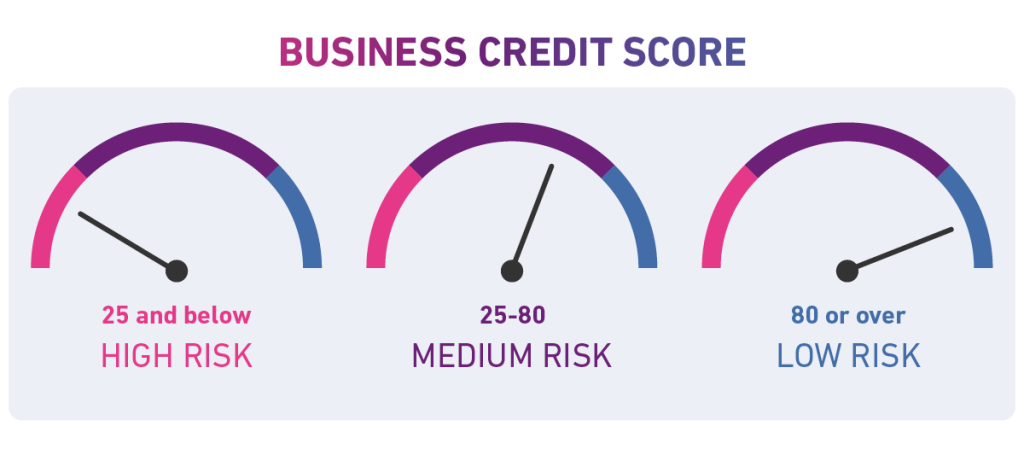Commercial credit scoring is integral to making confident, reliable lending or partnership decisions. It’s also a fundamental part of how a business understands its own credit health.
Each credit reference agency has its own scale, and at Experian, that’s the Commercial Delphi Score.
What is the Commercial Delphi Score?
The Commercial Delphi Score is a single harmonised score helping you to assess the commercial viability of customers and prospects. It combines our market expertise in scoring techniques with a unique combination of a number of data assets including;
- Company accounts
- Payment performance
- Director information
- Consumer scores
The combination of these data assets provides a clear and objective measure and calculation of a business’s creditworthiness, helping to predict defaults and suitability for lending at the point of application.
The Commercial Delphi Score gauges the risk of a company facing financial troubles or failure in the next 12 months by analysing its performance and credit history. This score is on a scale from 0 to 100, where a lower score means a higher risk. Zero means the business has failed or been dissolved.
Commercial Delphi scores and bands
The Commercial Delphi scores have been classified into bands that categorise the commercial risk score and then simplified into star ratings. Each business will be assigned a score, band and star rating.
Commercial Delphi Score | Commercial Delphi Band | Star Rating |
0 | Dissolved or serious adverse information such as a liquidator, receiver or administrator appointment, a resolution to wind up, a winding up order, a meeting of creditors or a voluntary arrangement. | 0 |
1 | Recent Winding-up Petition or Intention to Dissolve notice. | 0 |
2-15 | Maximum Risk | 0 |
16-25 | High Risk | ☆ |
26-50 | Above Average Risk | ☆☆ |
51-80 | Below Average Risk | ☆☆☆ |
81-90 | Low Risk | ☆☆☆☆ |
91-100 | Very Low Risk | ☆☆☆☆☆ |
What is a good Delphi credit score?
A “good” Delphi score would generally fall within the ranges associated with lower risk levels, specifically:
- A score between 81-90 indicates a low risk.
- A score between 91-100 indicates a very low risk.
These ranges suggest that companies with scores in these brackets are considered to have a lower likelihood of default or financial distress, making them more attractive to lenders. Businesses with scores in these ranges are likely to have better prospects for loan acceptance and may enjoy favourable terms and conditions when seeking credit.
On the other hand, scores below 80 may indicate an average or above-average level of risk, while a score of zero signifies the highest level of risk, typically associated with company failure or dissolution.

Commercial Credit: Key terms explained
Credit rating
A credit rating is a measure used to show the amount we believe a business could pay within a 30-day period. For example, if you were providing an invoice for a business to pay in 30 days, this is the recommended maximum value for that invoice.
The credit rating is based on:
- The company’s Delphi score, which shows how likely it is to face financial problems
- Its size
The rating ranges from a minimum of £500 to a maximum of £10 million. A lower risk Business Delphi score and a larger company size can lead to a higher credit rating. This doesn’t necessarily mean the company needs more credit because it’s doing poorly; rather, it reflects the company’s capacity to handle larger amounts of credit due to its stability and size. Conversely, smaller or riskier businesses might have lower credit ratings, indicating a lesser capacity for credit.
Credit limits
A credit limit is the maximum amount of credit we suggest a business should be given. It’s based on factors including the business’s credit rating, its current status, and the type of financial information it has filed with Companies House.
Here’s how it works:
- Credit limit vs. credit rating: While the credit rating estimates how much credit a business might typically need, the credit limit is the upper boundary of credit that should be safely extended to that business.
- Adjusting for risk: If a business is seen as riskier (which could be indicated by its Delphi score), we narrow the gap between the credit rating and the credit limit. This means for higher-risk businesses, the maximum credit recommended (credit limit) is closer to their average credit need (credit rating).
- Handling extraordinary situations: The credit limit comes into play particularly in situations where a business needs more credit than usual. For instance, if they’re placing a large order or seeking additional credit before settling an existing one.
It’s essentially a guideline for the maximum safe credit level to offer a business, adjusted according to risk and financial stability as indicated by their Commercial Delphi Score.
Failure odds
Failure odds are a way of understanding the likelihood of a business failing within the next 12 months. This is expressed in terms of odds, like 1 to 1, or 7 to 1. If a company has failure odds of 1 to 1, this means there’s a 50% chance of the business failing in the next year. But if the odds are 7 to 1, the chance of failure is much lower, about 12.5% (1 in 8 chance). The lower the odds, the higher the risk of the business failing. So, 1 to 1 is a higher risk than 7 to 1.
In essence, failure odds provide a straightforward way to gauge the risk of a business not succeeding in the next year, based on its current financial health and history.
Credit opinion
A credit opinion is a brief written summary that explains the Business Risk Score of a company. It’s provided for every business that has a lower Commercial Delphi Score, and is therefore a higher risk. It aims to put the numerical score into a more understandable context when it’s needed.
It includes a summary of the company’s creditworthiness which helps to interpret what the Delphi Score says about the company’s financial health and risk level.
How the Commercial Delphi Score can support better business decisions
Evaluating risk is fundamental to successful commercial lending. There’s an ever-increasing list of business verticals, and more and more data sources through which they can be analysed. So, how risk is assessed needs to change and update as the commercial landscape does.
This is why we’ve launched our newest commercial risk score, Commercial Delphi Generation 6. Commercial Delphi Generation 6 is designed to combine the most up-to-date data with industry-leading scoring techniques. It boasts an increased discriminatory power of 17-19 percentage points compared to previous versions, so businesses can benefit from more accurate lending decisions and reduced bad debt.
Use our value output calculator below to see how much bad debt savings your business could generate with Commercial Delphi Generation 6.
How can we help?
The Commercial Delphi Score provides you with a clear, objective measure of a company’s financial stability and crucial insights into the potential risks and viability of commercial relationships. It enables you to make well-informed decisions you can feel confident in.
Whether for assessing new clients, managing financial risks, or securing growth opportunities, the Commercial Delphi Score can support and inform your decision-making. By leveraging such robust and data-driven scoring systems, you can navigate the complex terrain of commercial credit with a greater sense of security and strategic acumen.












